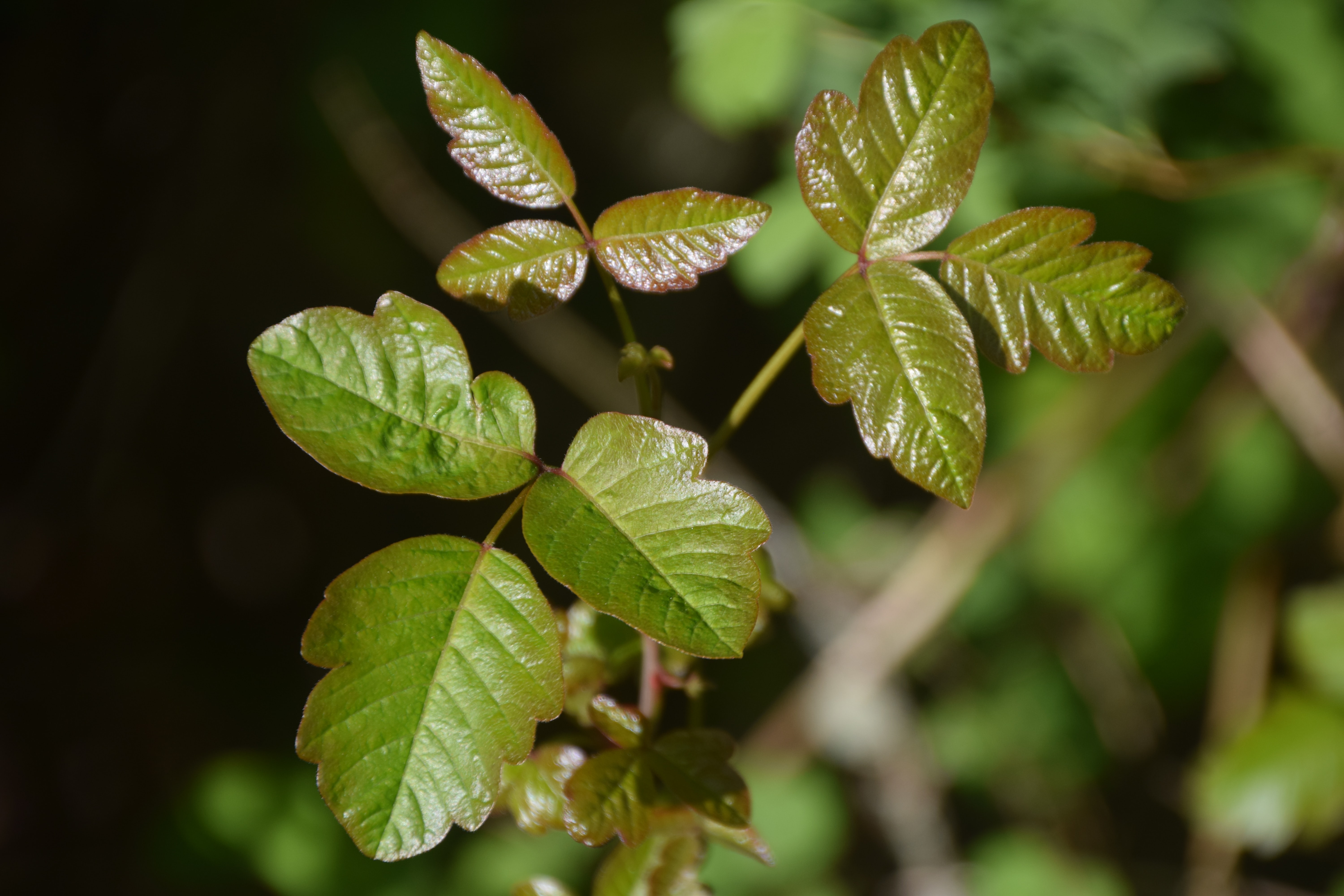How to get rid of poison ivy – and stay safe, too
Think you’ve found this menace in your backyard? Here’s how to get rid of poison ivy


Sarah Warwick
If you see it in the backyard, you’ll want to be sure about how to get rid of poison ivy. And that’s not just because it’s an unwelcome presence and a plant you didn’t choose to grow.
An oil in the leaves and stems of poison ivy can leave whoever’s come into contact with it with an itchy rash, and even blisters. And the very fact that it has this potential means banishing it isn’t the straightforward job removing other weeds can be.
Our guide has the details on how to get rid of poison ivy from the yard without coming to harm.
How to get rid of poison ivy
Before you find out how to get rid of poison ivy, you need to identify it – and to understand why you don't want to come into contact with it – in case the name isn't enough of a clue. Then, you will need to know how to protect yourself from it before you even begin to consider touching it.
How do I recognize poison ivy?
You might not spot poison ivy at first, especially if it’s tucked in among other plants, and it may look harmless, but it truly can be harmful and painful if you come into contact with it, so just like getting rid of wasps, you need to take it seriously. Though it’s common in the USA, the UK is fortunate not to have it at all. Just like regular ivy, Eastern poison ivy (Toxicodendron radicans) is a climber, happily scrambling over fences and up trees. Its relative, Western poison ivy (Toxicodendron rydbergii) is a low-growing shrub.
Don’t touch poison ivy, but take a look at the leaves, which are quite different to the usual ivy that decorates our yards.
‘Poison ivy is best recognized by a combination of factors,’ explains David Coyle, PhD, assistant professor of forest health and invasive species and state extension specialist with Clemson University. ‘One way is how the leaves are arranged on the stem. The old adage “leaves of three, let it be” is said because poison ivy has compound leaves with three leaflets. Leaf edges may be smooth or toothed, and the middle leaflet usually sticks out farther than the side ones.
Design expertise in your inbox – from inspiring decorating ideas and beautiful celebrity homes to practical gardening advice and shopping round-ups.
‘Vines are woody, and older ones have “hairs” connecting the vine to whatever it’s growing on (usually up a tree). “Hairy vine is no friend of mine” is another saying to help folks remember what to look for. As poison ivy grows up a tree, individual branches tend to come out perpendicular from the stem, giving it somewhat of a “layered” appearance. That said, poison ivy can be more bushy too – one of the challenges is how variable the plant can look.’
Another pointer is the small white flowers in spring followed by off-white berries; check out Poison-Ivy.org for more ways to identify it.
Poison oak can be mistaken for poison ivy, but the lobed leaves are rounded rather than pointed – it also contains the same rash-triggering oil, so beware.
Why is poison ivy dangerous?
The danger from poison ivy lies in what it contains. ‘Poison ivy has an oil called urushiol in the leaves and stem,’ says David Coyle. ‘Allergic reactions to this oil is what generally gives people that itchy rash, sometimes with blisters.’
Simply brushing against the plant can cause your skin to become incredibly itchy within a few hours, which can then result in a blistery red rash.
‘It is easy for poison ivy to get on your clothes, under your fingernails, and on other surfaces that can later transmit to your skin, and if you aren’t careful, areas like your eyes and mouth,’ warns Jeremy Yamaguchi, CEO of Lawn Love. In some cases the allergic reaction might not start for a few days, but it can last for several weeks.
Poison ivy can be a danger to pets, too, so getting rid of it is a must. If you come into contact with it, wash the affected area immediately. Over-the-counter lotions can soothe a mild rash, but if you have a serious allergic reaction, seek medical help urgently.
How can I protect myself when clearing poison ivy?
Once you’ve identified poison ivy, you’ll want to get out in the yard to kill it off as fast as possible, but it’s vital you to take a few precautionary measures first. Make sure children and pets are kept indoors then dress up in protective clothing.
‘Cover all your skin with long sleeves, pants, socks, closed-toed shoes, and gloves,’ says David Coyle. ‘If you’re burning poison ivy, breathing in the smoke can be extremely dangerous as the urushiol vapors may get inside your lungs and cause a reaction.’
Once you’re done, carefully take off your protective clothing and put it in the washing machine on a very hot cycle or dispose of it carefully. Hose shoes down and take a shower.
Can you pull poison ivy with gloves?
Yes, you can, pull poison ivy with gloves, but we recommend you dress in fully protective gear, as described above.
How to get rid of poison ivy fast
‘Herbicides with the active ingredient triclopyr or glyphosate are effective against poison ivy,’ says David Coyle. ‘These can be purchased at any big box store or garden center.’ We like Roundup® Ready-To-Use Poison Ivy Plus Tough Brush Killer.
Always apply a herbicide according to the instructions on the label. Keep an eye on the area in case poison ivy starts to creep back, in which case you’ll have to repeat the procedure.
‘If you're very allergic to poison ivy or are uncomfortable using herbicides, it’s best to let a professional help control these plants,’ adds David.
How to get rid of poison ivy without killing other plants
To get rid of poison ivy without killing other plants, first dress in fully protective clothing, then use secateurs or garden shears to cut the plant right back and a spade to dig out the roots.
Tearing away the vines is a bad idea, as this can release and spread the dangerous oil they contain.
Collect up every scrap of the plants into plastic bags and seal them before putting them in the trash (or seek advice on disposal from your local authority) and washing everything carefully.
If you’re prepared to wait, smothering works for other weeds and it’s a pretty good way to get rid of poison ivy, too. After cutting the plants back to ground level, cover the entire area with cardboard (flattened boxes are ideal), so that no light can get in, securing it with bricks or any pieces of lumber that are to hand. Wait three weeks then dress up in your gear again and dig out the plants and their roots, putting them into plastic bags and sealing them.
Clean tools well, using alcohol, vinegar or degreaser and follow the same steps for washing clothing as above.
‘It is possible that pouring boiling water on young plants may kill them,’ advises David Coyle. ‘That said, it will kill anything else it comes in contact with as well.’
How to kill poison ivy with vinegar and salt
To make your own weed killer to get rid of poison ivy, you don’t need to buy any special ingredients.
Put one cup of coarse salt into a pan with one gallon of white vinegar and heat it just enough to dissolve the salt.
Next add eight to 10 drops of dish liquid. When it’s cool enough that it won’t scald you, pour it into a spray bottle and use on the poison ivy. Take care not to get the solution on other plants.
You’ll need to put on protective gear when you dig up the dead plants and dispose of the poison ivy in sealed bags.
Is it safe to burn poison ivy?
It is definitely not safe to burn poison ivy. When the ivy burns it can release toxins from its oil into the atmosphere. Breathing them in can harm your nose, throat, lungs and even make breathing difficult. If you’ve accidentally burned some and notice any ill effects, get medical help straight away.

Lola Houlton is a news writer for Homes & Gardens. She has been writing content for Future PLC for the past six years, in particular Homes & Gardens, Real Homes and GardeningEtc. She writes on a broad range of subjects, including practical household advice, recipe articles, and product reviews, working closely with experts in their fields to cover everything from heating to home organization through to house plants. Lola is a graduate, who completed her degree in Psychology at the University of Sussex. She has also spent some time working at the BBC.
- Sarah WarwickContributing Editor